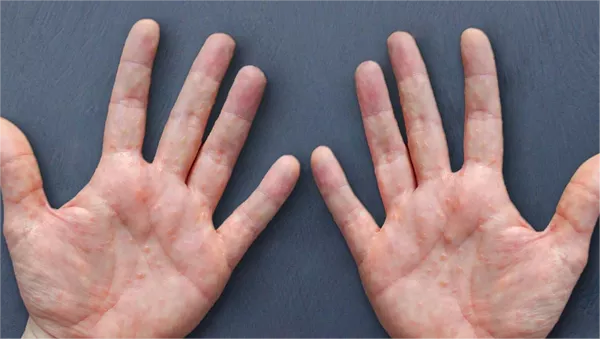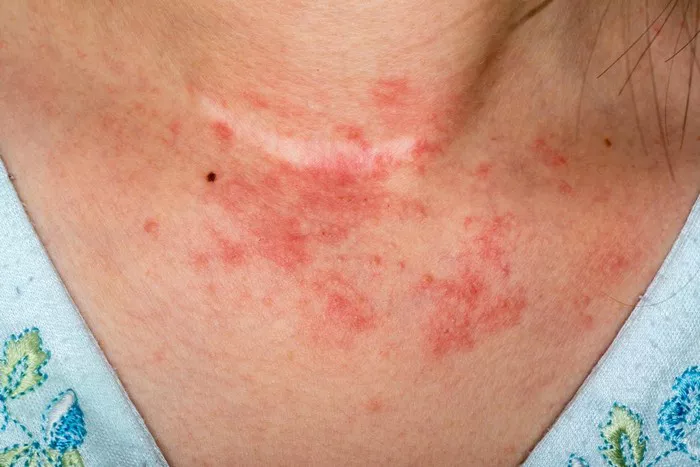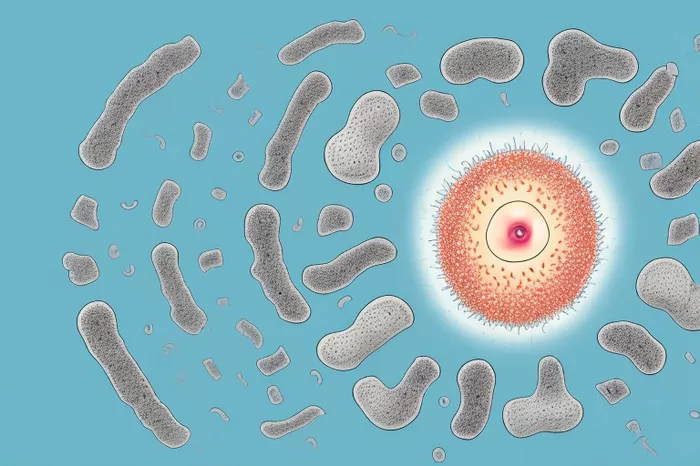Dermatitis is a general term for inflammation of the skin. It can cause various symptoms, including redness, itching, and swelling. Understanding dermatitis is essential for proper management and treatment. This article will cover the types, causes, symptoms, diagnosis, treatment options, and prevention strategies for dermatitis.
Types of Dermatitis
There are several types of dermatitis, each with unique features. The most common types include:
1. Atopic Dermatitis
Atopic dermatitis is often referred to as eczema. It is a chronic condition that usually starts in childhood. People with atopic dermatitis have dry, itchy skin. It can flare up due to various triggers, such as allergens or stress.
2. Contact Dermatitis
Contact dermatitis occurs when the skin comes into contact with an irritant or allergen. There are two types:
Irritant Contact Dermatitis: This type occurs when a substance damages the skin. Common irritants include soaps, detergents, and chemicals.
Allergic Contact Dermatitis: This occurs when the skin reacts to a substance to which it is allergic. Common allergens include nickel, poison ivy, and certain fragrances.
3. Seborrheic Dermatitis
Seborrheic dermatitis mainly affects areas of the body with many oil-producing glands. It causes red, scaly patches on the scalp, face, and upper back. Dandruff is a common form of this condition.
4. Dyshidrotic Dermatitis
Dyshidrotic dermatitis causes small, itchy blisters on the hands and feet. The exact cause is not clear, but it may be linked to stress, allergies, or damp conditions.
5. Nummular Dermatitis
Nummular dermatitis appears as round, coin-shaped patches on the skin. It is often triggered by dry skin and can be itchy and uncomfortable.
6. Stasis Dermatitis
Stasis dermatitis occurs in people with poor circulation, usually in the legs. It leads to swelling, redness, and itching due to fluid buildup.
Causes of Dermatitis
The exact cause of dermatitis can vary depending on the type. Here are some common causes:
1. Genetic Factors
Some people are more prone to dermatitis due to their genetic makeup. If you have a family history of skin conditions, you may be more likely to develop dermatitis.
2. Environmental Triggers
Various environmental factors can trigger dermatitis. These may include:
Irritants: Chemicals in soaps, detergents, and cleaning products can irritate the skin.
Allergens: Substances like pollen, pet dander, and certain foods can cause allergic reactions.
Weather: Extreme temperatures, humidity, and dry air can worsen skin conditions.
3. Stress
Emotional stress can play a significant role in triggering or worsening dermatitis. Stress may lead to scratching, which can further irritate the skin.
4. Infections
Bacterial, viral, or fungal infections can contribute to dermatitis flare-ups. For example, a skin infection may develop due to scratching.
5. Hormonal Changes
Hormonal fluctuations, such as those occurring during menstruation or pregnancy, can also influence skin health and trigger dermatitis.
Symptoms of Dermatitis
Dermatitis symptoms can vary widely depending on the type and severity. Common symptoms include:
1. Redness
Affected areas often appear red and inflamed. This redness can vary from mild to severe.
2. Itching
Itching is one of the most distressing symptoms of dermatitis. It can range from mild to intense, leading to scratching and further irritation.
3. Dryness and Flaking
The skin may become dry and flaky, especially in conditions like atopic dermatitis and nummular dermatitis.
4. Swelling
Inflamed areas may swell, making the skin feel warm and tender.
5. Blisters
In some types, such as dyshidrotic dermatitis, small blisters may form. These blisters can ooze and crust over.
6. Thickened Skin
Chronic dermatitis may lead to thickened, leathery skin from prolonged scratching or irritation.
Diagnosing Dermatitis
Diagnosis of dermatitis usually involves a physical examination and a review of medical history. Your healthcare provider may also ask about:
Symptoms: When they started and their severity.
Triggers: Any known irritants or allergens.
Family History: Any family history of skin conditions.
Patch Testing
For allergic contact dermatitis, your doctor may recommend patch testing. This test involves placing small amounts of allergens on your skin to see if a reaction occurs.
Skin Biopsy
In some cases, a skin biopsy may be necessary. A small sample of skin is taken and examined under a microscope to rule out other conditions.
Treatment Options for Dermatitis
Treatment for dermatitis depends on the type and severity. Here are some common approaches:
1. Topical Treatments
Corticosteroids: These anti-inflammatory creams help reduce redness and itching. They come in various strengths and should be used as directed.
Calcineurin Inhibitors: These are non-steroidal creams that help reduce inflammation. They are often used for sensitive areas like the face.
Moisturizers: Regular use of moisturizers helps keep the skin hydrated. Look for thick creams or ointments for best results.
2. Oral Medications
For severe cases, oral medications may be prescribed. These can include:
Antihistamines: These help relieve itching and may improve sleep.
Corticosteroids: Oral steroids may be used for severe inflammation but are typically prescribed for short durations.
3. Light Therapy
Phototherapy involves exposing the skin to controlled amounts of natural or artificial light. This can help reduce symptoms for some people.
4. Avoiding Triggers
Identifying and avoiding triggers is crucial in managing dermatitis. Keep a diary to track symptoms and potential triggers.
5. Lifestyle Changes
Implementing lifestyle changes can also help manage dermatitis. Some strategies include:
Stress Management: Techniques like yoga, meditation, or therapy can help reduce stress levels.
Gentle Skin Care: Use mild soaps and avoid hot water when bathing.
Preventing Dermatitis
While not all cases of dermatitis can be prevented, there are steps you can take to minimize your risk:
1. Maintain Healthy Skin
Keep your skin moisturized and avoid harsh soaps. Apply moisturizer right after bathing to lock in moisture.
2. Identify and Avoid Triggers
Be aware of your triggers and take steps to avoid them. This may involve wearing gloves when using cleaning products or avoiding known allergens.
3. Wear Protective Clothing
When engaging in activities that expose your skin to irritants, such as gardening or cleaning, wear protective clothing.
4. Manage Stress
Practice stress-reducing techniques regularly. This can help prevent flare-ups linked to emotional stress.
5. Regular Check-ups
Regular visits to a dermatologist can help monitor your skin condition and adjust treatments as needed.
When to See a Doctor
You should see a healthcare provider if:
- Your symptoms worsen or do not improve with over-the-counter treatments.
- You develop signs of infection, such as increased redness, swelling, or pus.
- You experience significant discomfort or interference with daily activities.
Conclusion
Dermatitis is a common skin condition that can cause significant discomfort. Understanding its types, causes, symptoms, and treatment options can help you manage this condition effectively. By taking proactive steps, you can reduce your risk of flare-ups and maintain healthier skin. Always consult with a healthcare professional for a personalized approach to your skin health.


























